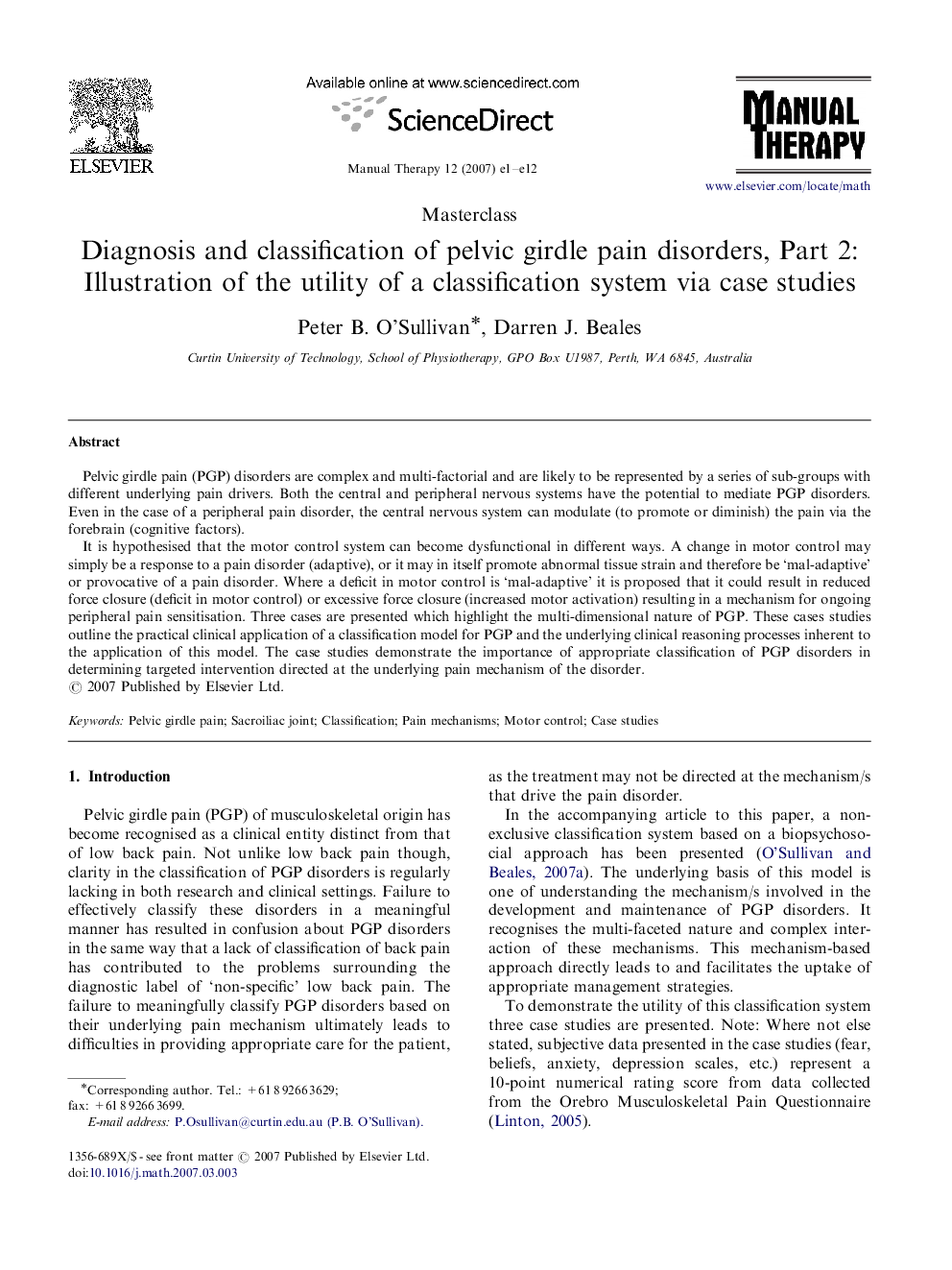| کد مقاله | کد نشریه | سال انتشار | مقاله انگلیسی | نسخه تمام متن |
|---|---|---|---|---|
| 2625766 | 1135964 | 2007 | 12 صفحه PDF | دانلود رایگان |

Pelvic girdle pain (PGP) disorders are complex and multi-factorial and are likely to be represented by a series of sub-groups with different underlying pain drivers. Both the central and peripheral nervous systems have the potential to mediate PGP disorders. Even in the case of a peripheral pain disorder, the central nervous system can modulate (to promote or diminish) the pain via the forebrain (cognitive factors).It is hypothesised that the motor control system can become dysfunctional in different ways. A change in motor control may simply be a response to a pain disorder (adaptive), or it may in itself promote abnormal tissue strain and therefore be ‘mal-adaptive’ or provocative of a pain disorder. Where a deficit in motor control is ‘mal-adaptive’ it is proposed that it could result in reduced force closure (deficit in motor control) or excessive force closure (increased motor activation) resulting in a mechanism for ongoing peripheral pain sensitisation. Three cases are presented which highlight the multi-dimensional nature of PGP. These cases studies outline the practical clinical application of a classification model for PGP and the underlying clinical reasoning processes inherent to the application of this model. The case studies demonstrate the importance of appropriate classification of PGP disorders in determining targeted intervention directed at the underlying pain mechanism of the disorder.
Journal: Manual Therapy - Volume 12, Issue 2, May 2007, Pages e1–e12